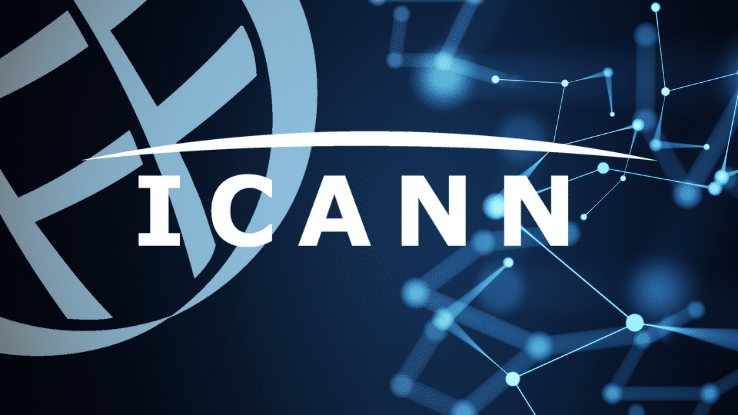Many agencies, freelancers and small hosters start with just a few domains for their own customers or projects. At some point, the question arises: How can your domain reselling be scaled efficiently without the administrative effort exploding or sources of error increasing?
Domain reselling is a business area that relies heavily on automation, clear processes and recurring revenue. If you use the right systems, you can multiply your inventory without much additional effort – and turn a sideline into a stable, scalable business model.
But technology alone is not enough. To really grow a reseller business, you need a well thought-out combination of automated processes, pricing strategy, marketing, customer management and reporting.
This guide shows you step by step what you should look out for if you want to expand your reseller business from 10 to 1,000 domains.
1. automation is the basis of all scaling
As soon as you manage more than a few dozen domains, manual work quickly becomes a burden. Every manual registration, renewal or change costs time and is prone to errors.
That’s why the most important basis for growth is automation via a stable API.
Typical areas that you should automate:
- Domain registrations and transfers
- Renewals: Automatic renewals with defined notification logic prevent domains from accidentally expiring.
- DNS management: With zone templates and automated name server configuration, you can automatically create standard DNS entries during domain registration – an important step towards avoiding errors and saving time with large domain portfolios.
- Monitoring & Alerts: Monitors domain status, API logs and DNS errors. This allows you to detect problems early before they affect customers.
If you work with a platform that offers a modern API and good documentation – like the ResellerInterface – you can control processes centrally and save a lot of time. This is the decisive factor, especially with several hundred domains.
2. pricing models and margins: scaling with a system
More domains do not automatically mean more profit. If you simply lower prices as the number increases, you are giving away potential.
Instead, it pays to have a strategic pricing structure that takes your cost structure into account and creates incentives for customers.
Three practical tips:
- Take advantage of your provider’s graduated prices: Many registrar programs offer lower purchase prices for higher domain volumes. This improves your margin immediately.
- Calculate on the basis of average costs: take exchange rates, promotions and renewal conditions into account. This ensures that your price remains sustainable in the long term.
- Offer value-added services: DNS management, domain safe, domain monitoring, SSL certificates or mail services increase the average revenue per customer without you having to increase domain prices.
If you base your business model on the fact that each domain carries additional services, you automatically build up recurring revenue and increase customer loyalty.
3. customer management and white label solutions
Professional customer management is the next step as soon as you have more than a handful of customers. This is where the white label approach comes into its own: Your customers can register domains via your branding, while your provider’s technical infrastructure runs in the background.
Advantages of a white label solution:
- Your brand presence remains consistent – you are the visible provider.
- Customers can manage domains themselves, which reduces support costs.
- Different price levels or accesses (e.g. for agencies, resellers or end customers) can be mapped flexibly.
A clearly structured customer portal with clear role rights prevents chaos as your portfolio grows. Also make sure to standardize your support channels: A central ticket system or email workflow saves you a lot of time with many customers.
4. marketing and positioning: making growth visible
Technical scaling is one side, customer acquisition and brand building the other.
Good marketing ensures that your business continuously acquires new customers – without you having to rely on coincidences.
Target group and positioning
First, think about who your main customers are:
- Do you work with agencies, IT service providers or resellers (B2B)?
- Or are you addressing end customers who want to manage their domains themselves (B2C)?
It depends on how you position your brand – whether through price, service or specialization (e.g. local businesses or specific industries).
Content and search engine marketing
Content marketing works particularly well in the domain environment.
Create regular articles, guides or checklists on topics such as:
- “How to secure your desired domain before someone else does”
- “Which domain extension suits your company?”
- “How to combine domains and trademark rights correctly”
Such content brings organic traffic, strengthens your brand and creates trust – an ideal basis for long-term customer relationships.
Customer loyalty and upselling
Existing customers are usually the most important growth driver.
Regular newsletters or automated campaigns can promote new TLDs, domain promotions or additional services.
Simple cross-selling offers are also worthwhile: e.g. an SSL certificate or email package for the new domain.
Partnerships and cooperations
Growth is also generated by network effects.
Search for targeted partnerships with agencies, developers or SaaS providers who need domains for their customers but do not want to operate their own reselling system.
You can offer these partners their own marketing platform via white label access or reseller sub-accounts – your portfolio grows without you having to provide more support yourself.
5 Legal aspects and compliance
- GDPR / data protection: Make sure to store and process customer data and WHOIS information correctly.
- Registrar contracts & GTCs: Check conditions for termination, returns, price adjustments and transfers.
- Trademark protection & domain disputes: Know the risks of trademark infringement and UDRP litigation.
6. structure processes and workflows
Growth is only sustainable if your internal processes keep pace.
This includes clear processes for:
- Domain lifecycle management: from registration to deletion – including renewal reminders and deadline monitoring.
- Communication: Automated notifications to customers, e.g. 30 days before expiry.
- Financial processes: A consistent accounting system with automatic recording and export.
- Monitoring: Reports that show you which domains are active, expiring or overdue.
7. analyze your growth with key figures
Scaling only works if you know which factors actually contribute to your success.
Therefore, keep an eye on the following key figures regularly:
- Renewal rate (renewal rate): How many domains are actively renewed?
- Revenue per customer and per TLD: Which domain extensions are the most profitable?
- Customer growth per month: How many new customers or resellers do you gain?
- Support costs: How much time does it take on average to support a customer?
This data shows you where you can become more efficient – and which areas should be developed further, for example through marketing, automation or price adjustments.
8. international expansion (optional)
If you want to sell in several countries, you should consider local TLDs, currencies and languages. Various payment methods (credit card, SEPA, PayPal) facilitate the acquisition of international customers.
Conclusion: Scaling means creating structures
Growing from 10 to 1,000 domains is no coincidence, but the result of a clear system.
Those who reduce manual work, optimize price structures, make targeted use of marketing, professionalize customer management and regularly evaluate data can successfully expand their domain reselling business in the long term.
If you want to automate your processes and manage your portfolio professionally, it’s worth taking a look at the ResellerInterface.
Here you can manage domains, SSL certificates and other services centrally, offer white label access for customers and fully automate all processes – the ideal basis for scaling your business efficiently and profitably.








Leave a Reply